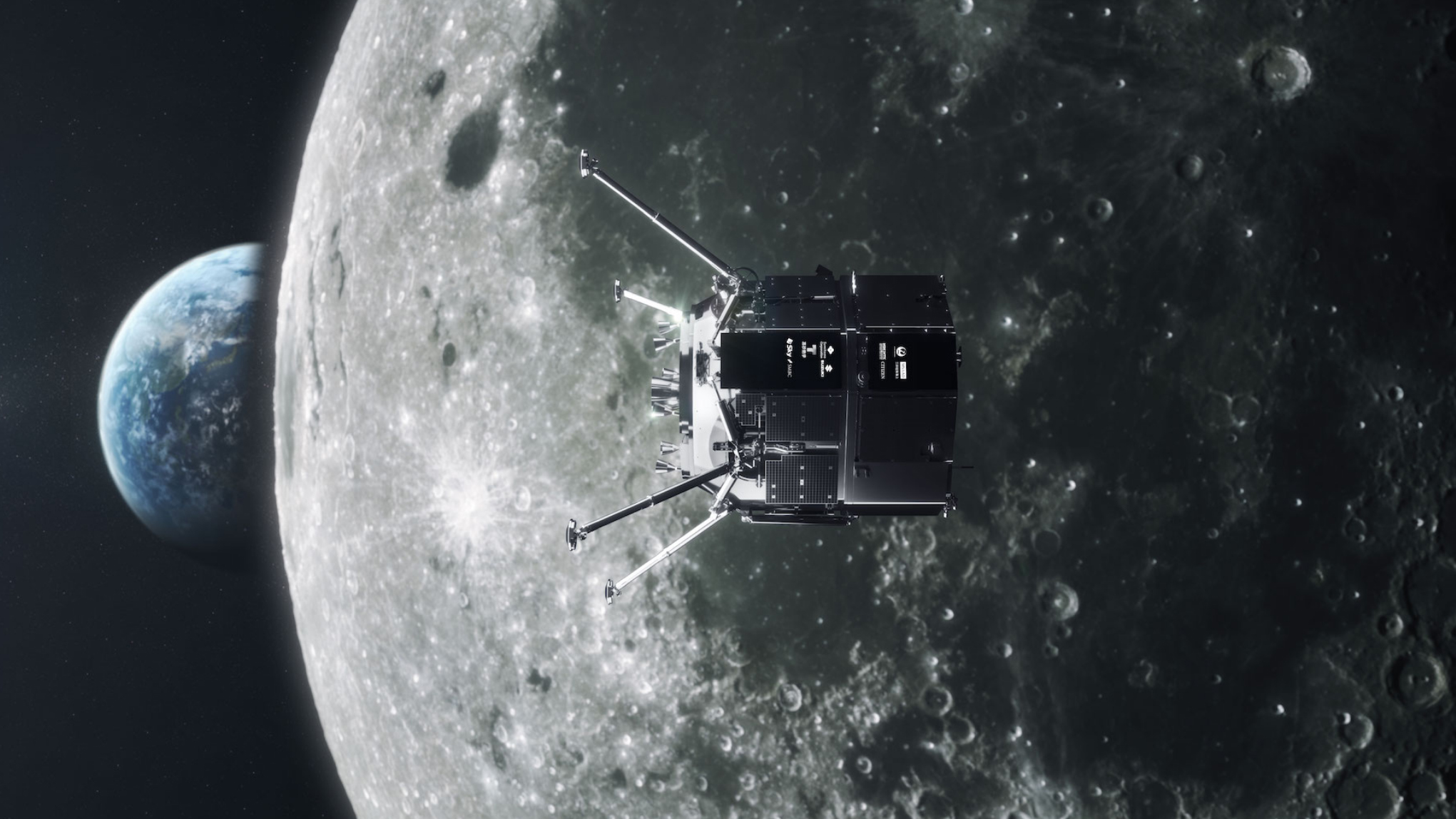
A private Japanese lander has made it to the moon.
The Hakuto-R spacecraft entered lunar orbit late Monday night (March 20), notching a huge milestone for the Japanese company ispace, which has big plans in Earth-moon space.
"The successful insertion of the lander into lunar orbit is an important step toward the establishment of a payload transportation service, as it demonstrates that ispace is capable of transporting customer payloads to orbit around the moon," representatives of Tokyo-based ispace wrote in an update on Tuesday (March 21).
"Future ispace missions will involve deployment of satellites into lunar orbit," they added.
Lunar timeline: Humanity's exploration of the moon
Hakuto-R launched atop a SpaceX Falcon 9 rocket on Dec. 11, 2022, kicking off a test flight that ispace calls Mission 1.
The lander then took a long, looping and highly energy-efficient path to the moon, finally arriving there after an engine burn that started at 9:24 p.m. EDT on Monday (0124 GMT and 10:24 a.m. Japan Standard Time on Tuesday).
Get the Space.com Newsletter
Breaking space news, the latest updates on rocket launches, skywatching events and more!
"After a controlled burn from the lander's main propulsion system lasting several minutes, the maneuver was successfully completed," ispace wrote in Tuesday's update.
Hakuto-R's work is far from done, however: The lander will attempt to touch down on the moon late next month, if all goes according to plan. ispace has not yet announced a target date for that landmark try.
And it will indeed be a landmark: No privately operated spacecraft has ever landed softly on the moon. To date, the only probes to achieve the feat have been operated by the national space agencies of the U.S., the Soviet Union and China.
If Hakuto-R does ace the landing, it will deploy a tiny rover named Rashid for the United Arab Emirates' space agency.
If all goes according to plan, Mission 1 will be followed in relatively quick succession by two other robotic flights to the surface of the moon, as ispace works to help lay the foundation for a cislunar economy.
Mission 2 and Mission 3 are targeted to launch in 2024 and 2025, respectively. Mission 3's lander will carry payloads to the surface and also deploy two communications satellites in lunar orbit, ispace representatives have said.
With Hakuto-R's success, there are now two privately operated spacecraft orbiting the moon. The other is CAPSTONE, a tiny cubesat operated for NASA by Colorado-based company Advanced Space.
CAPSTONE arrived in a near-rectilinear halo orbit (NRHO) around the moon last November. The probe's main task is testing the stability of the lunar NRHO, the same path that will be taken by NASA's moon-orbiting Gateway space station, a key component of the agency's Artemis program.
Mike Wall is the author of "Out There" (Grand Central Publishing, 2018; illustrated by Karl Tate), a book about the search for alien life. Follow him on Twitter @michaeldwall. Follow us on Twitter @Spacedotcom or on Facebook.
Join our Space Forums to keep talking space on the latest missions, night sky and more! And if you have a news tip, correction or comment, let us know at: community@space.com.

Michael Wall is a Senior Space Writer with Space.com and joined the team in 2010. He primarily covers exoplanets, spaceflight and military space, but has been known to dabble in the space art beat. His book about the search for alien life, "Out There," was published on Nov. 13, 2018. Before becoming a science writer, Michael worked as a herpetologist and wildlife biologist. He has a Ph.D. in evolutionary biology from the University of Sydney, Australia, a bachelor's degree from the University of Arizona, and a graduate certificate in science writing from the University of California, Santa Cruz. To find out what his latest project is, you can follow Michael on Twitter.
-
Denxio Good news! I hope Hakuto lands successfully and his little friend Rashid travels on the moon.Reply









